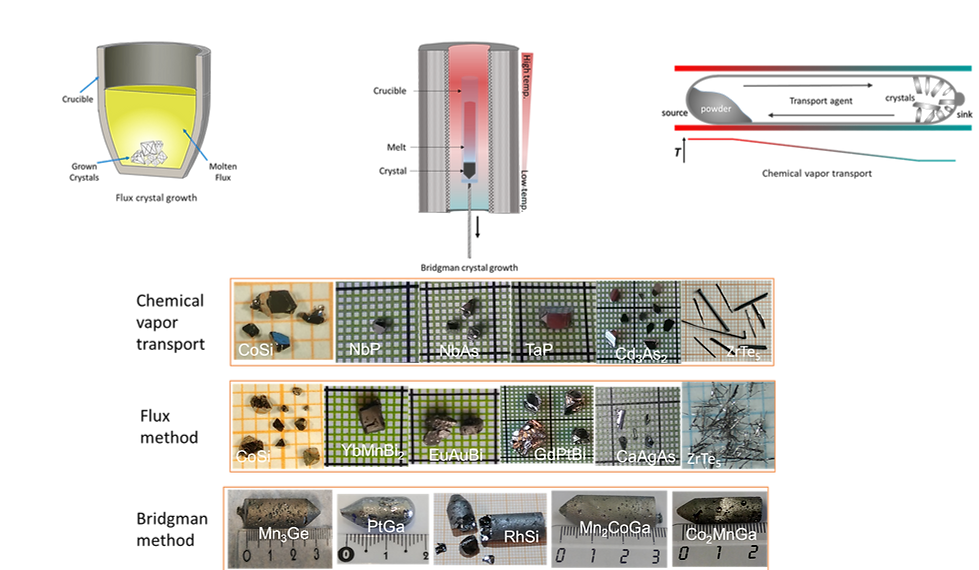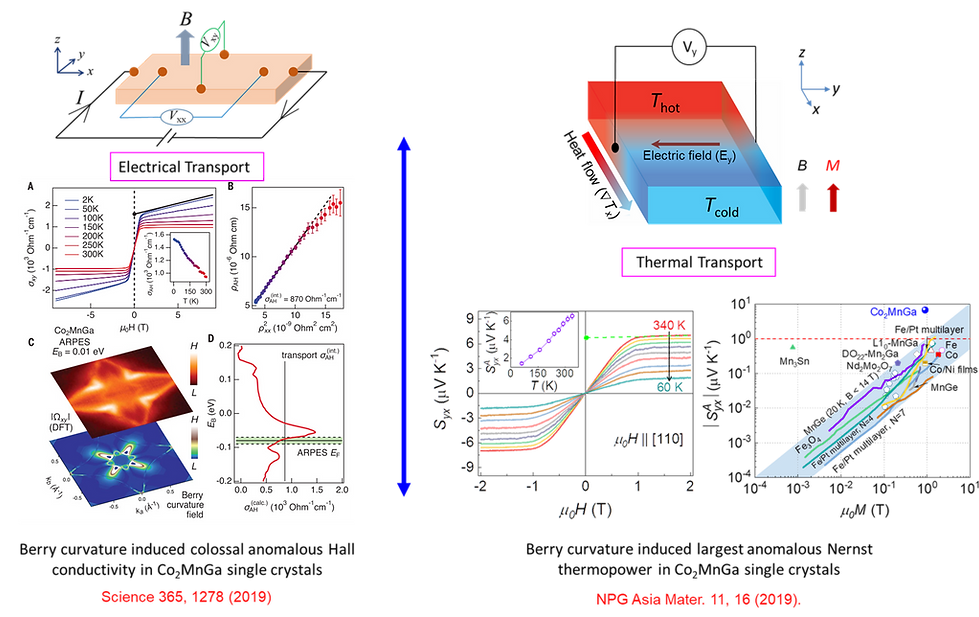Indian Institute of Technology, Delhi

IIT Delhi
Physics Department
Quantum Materials Magneto-Transport Laboratory
Quantum material is an emergent research field today. Recent investigations on the entire material databases reveal that, thousands of already known materials probably contain topological properties and altogether, it is up to ~ 24% of all the materials existing in nature [Vergniory et al. Nature 566, 480–485 (2019); Zhang et al. Nature 566, 475–479 (2019), Tang et al. Nature 566, 486–489 (2019)]. Only handful of them has been investigated so far for novel quantum transport phenomenon. Recognition of such vast number of materials enhances the possibility of more breakthroughs in near future.
In the ‘Quantum Materials Magneto-Transport Laboratory’, we grow high quality single crystals of diverse class of topological materials using suitable crystal growth techniques. The materials are selected based on systematic tunability of the composition, the symmetry (centro, non-centro, cubic, hexagonal, tetragonal etc.), the magnetic order (ferro, ferri, antiferro, compensated, non-collinear, with and without magnetic anisotropy) and the strength of spin-orbit-coupling. As potential candidate, we shall work on different materials like topological oxides, Intermetallic Heuslers, 2-D magnetic and non-magnetic layer compounds, magnetic chiral topological materials etc.

Single Crystal Growth
The single crystals are the regular periodic arrangement of constituent molecules, ions or atoms in three dimensions which follow certain symmetry constraints. They are the pillars of the fabulous scientific discoveries starting from discovery of new topological states to exotic quantum phenomenon.
We investigate various physical properties, like the magnetic, electrical, thermal, optical and the mechanical properties of the grown single crystals of various quantum materials. Since the crystals can be highly anisotropic depending on the symmetry and lattice parameters of the crystal structure, measuring physical properties along different crystallographic directions are highly important. Various crystal growth methods will be followed to grow the single crystals, involving Bridgman crystal growth, flux method, chemical vapour transport etc. depending on the respective phase diagram of the target compounds. Then the crystals will be analyzed using the Laue as-well-as X-ray diffractions and orient along desired crystallographic direction using a wire saw and goniometer assembly.

Magnetic, Electrical and Thermal
Transport Measurements
With the oriented single crystals detailed magnetic, electrical and thermal transport measurements will be performed in the temperature range mK to 400 K under magnetic field upto 14 T. de Haas–van Alphen and Shubnikov–de Haas oscillations will be analyzed to understand the Fermi surface topology and effect of the Berry phase. Besides magnetic and transport measurements will be performed at various angle to understand the anisotropy in the physical properties. For selected samples, high magnetic pulse field measurements upto 70 T will be performed in collaboration with Helmholtz-Zentrum Dresden-Rossendorf (HZDR), Germany to probe the physical properties at the quantum limit.
